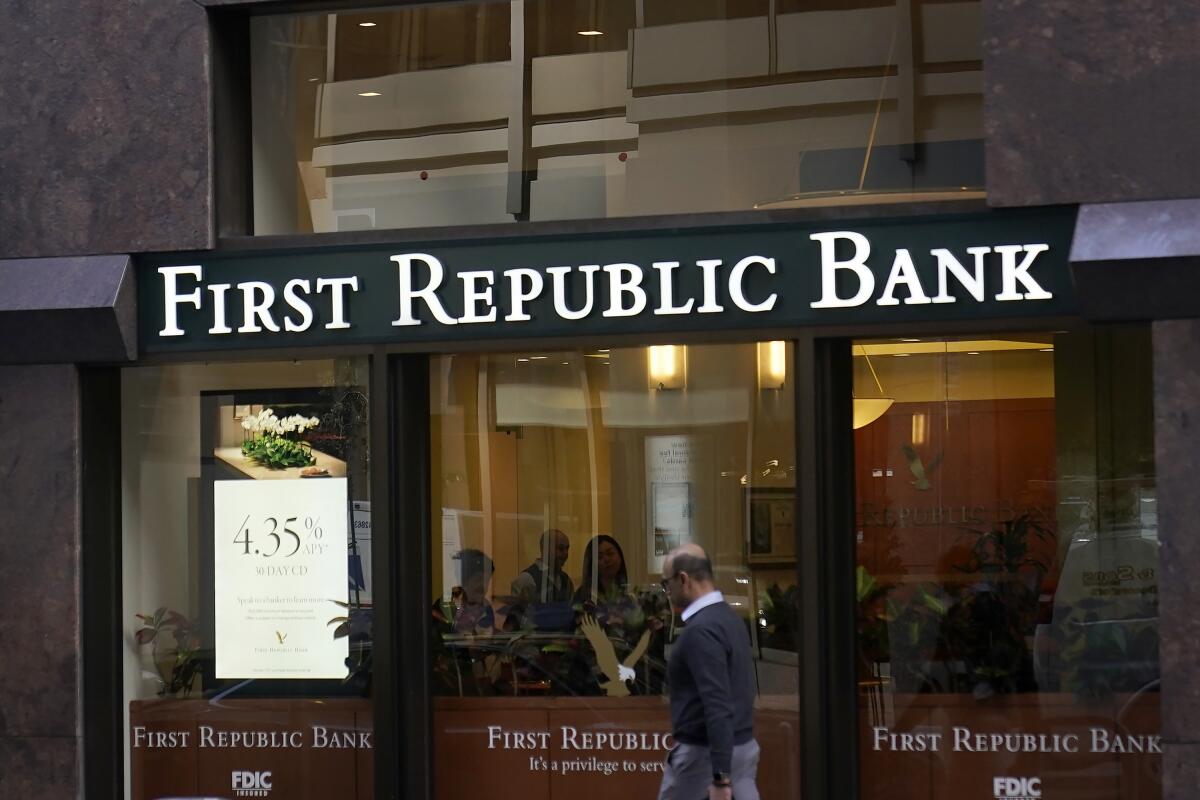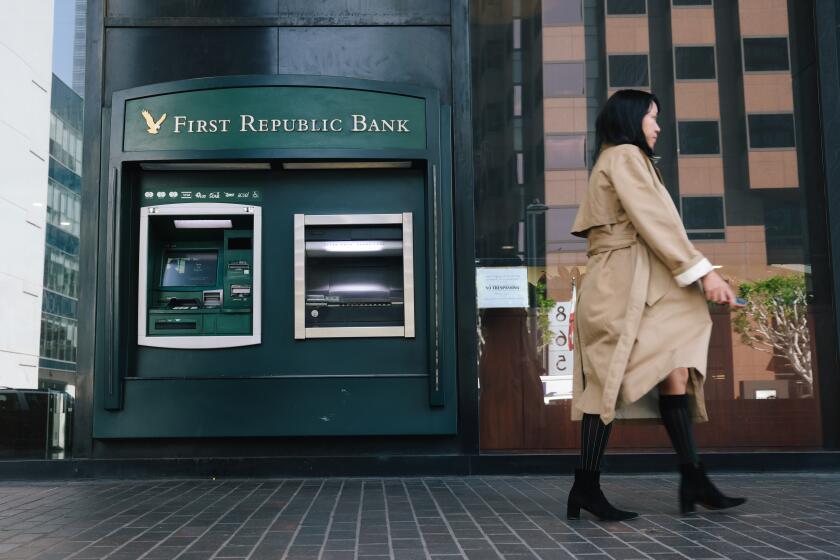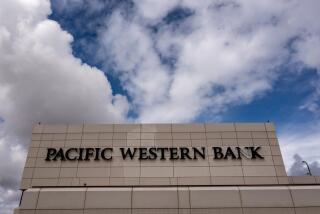First Republic up in air as regulators juggle bank’s fate

- Share via
NEW YORK — Regulators continued their search for a solution to First Republic Bank’s woes over the weekend before stock markets open Monday.
First Republic has struggled since the collapse of Silicon Valley Bank and Signature Bank in early March, as investors and depositors have grown increasingly worried that the San Francisco bank may not survive as an independent entity for much longer. The bank’s shares closed at $3.51 on Friday, a fraction of the roughly $170 a share it traded for a year ago.
First Republic has been seen as the next bank most likely to collapse because of its high amount of uninsured deposits and exposure to low interest rates.
Gary Cohn, a former Goldman Sachs president who served as President Trump’s top economic advisor, told CBS News’ “Face the Nation” on Sunday that the Federal Deposit Insurance Corp. “would prefer to sell the bank in its entirety than in pieces.”
“What will most likely happen is the FDIC will seize control and then simultaneously resell the asset to the successful bidder,” Cohn said.
Cohn said he believed it will be a “much faster process” than what happened with Silicon Valley Bank.
First Republic Bank plunged to a record low as investors sorted through rescue scenarios, none of which is likely to be good for current shareholders.
First Republic reported total assets of $233 billion as of March 31. At the end of last year, the Federal Reserve ranked First Republic 14th in size among U.S. commercial banks.
Before Silicon Valley Bank failed, First Republic had a banking franchise that was the envy of most of the industry. Its clients — mostly the rich and powerful — rarely defaulted on their loans. The 72-branch bank has made much of its money making low-cost loans to the rich, which reportedly included Meta Platforms Chief Executive Mark Zuckerberg.
Flush with deposits from the well-heeled, First Republic saw total assets more than double from $102 billion at the end of 2019’s first quarter, when its full-time workforce was 4,600.
But the vast majority of First Republic’s deposits, like those in Silicon Valley and Signature Bank, were uninsured — that is, above the $250,000 limit set by the FDIC. And that began to fuel worries about the franchise among analysts and investors. If First Republic were to fail, its depositors would be at risk of not getting all their money back.
Those fears were crystalized in the bank’s recent quarterly results. The bank said depositors pulled more than $100 billion out of the bank during April’s crisis. First Republic said that it was able to stanch the bleeding only after a group of large banks stepped in to save it with $30 billion in uninsured deposits.
But now First Republic is in need of a bigger fix.
“Getting the bank in the hands of a larger one is the best possible economic outcome,” said Steven Kelly, a researcher at the Yale School of Management’s Program on Financial Stability. “First Republic has lots of knowledge about its customers and has been a profitable bank for its entire history — but its business model is not stable. It needs a big bank balance sheet behind it.”
Kelly said that other options, such as government control or continuing to try to survive on its own, would see its value continue to disappear, along with credit and economic growth.
“A successful absorption into a big bank would provide a proper, stable home for the firm to continue to provide its value proposition to the economy,” Kelly said.
Since the crisis, First Republic has been looking for a way to quickly turn itself around. The bank planned to sell off unprofitable assets, including the low-interest mortgages that it provided to wealthy clients. It also announced plans to lay off up to a quarter of its workforce, which totaled about 7,200 employees at the end of 2022.
But investors have remained skeptical. The bank’s executives have taken no questions from investors or analysts since the bank reported its results, causing the stock to sink further.
And it’s hard to profitably restructure a balance sheet when a company has to sell off assets quickly and has fewer bankers to find opportunities for the bank to invest in. It took years for banks such as Citigroup and Bank of America to return to profitability after the global financial crisis 15 years ago, and those banks had the benefit of a government-aided backstop to keep them going.
More to Read
Inside the business of entertainment
The Wide Shot brings you news, analysis and insights on everything from streaming wars to production — and what it all means for the future.
You may occasionally receive promotional content from the Los Angeles Times.











